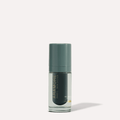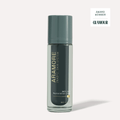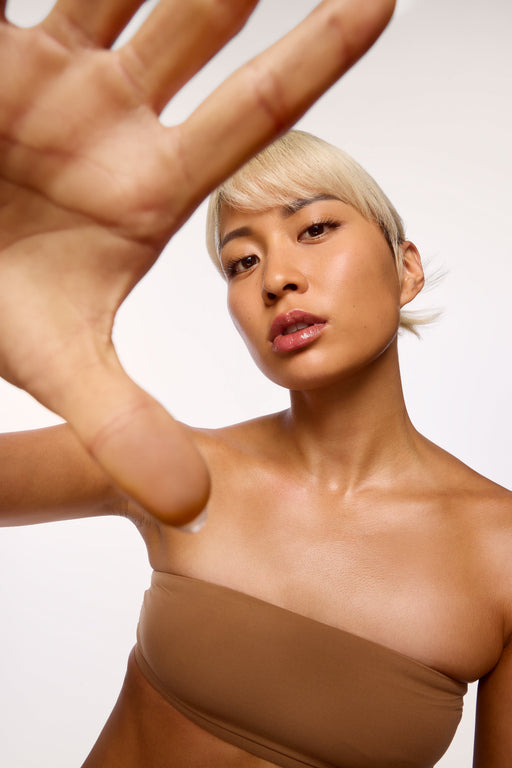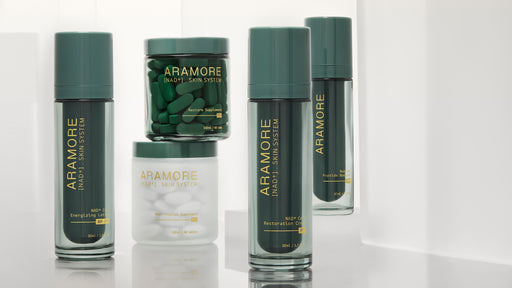Here, we go through some of these fads, myths, and trends to answer the critical question: do they really work?
Collagen
Collagen has been all the rage recently. As the main protein found in your skin’s connective tissues that helps maintain elasticity, it’s certainly true that healthy collagen production is important in maintaining your skin’s youthful appearance. In this case, though, the devil is in the details.
While increased collagen is essential to skin appearance, simply applying collagen to our skin in its native form doesn’t work for one simple reason: the molecule is too big to get through our skin’s outer layers. So, it doesn’t make it through to the skin layers that matter, and as a result, doesn’t supplement collagen in the skin. Sorry, collagen fans!
But, there is good news too: a broken-down form of collagen known as collagen hydrolysate is a small enough molecule to be absorbed into the skin and is also bioavailable when taken as a supplement. Hydrolysate has been demonstrated to act as an antioxidant and to protect against high blood pressure. And it’s been shown to increase moisture and elasticity, and reduce wrinkles and roughness in facial skin. With its many known benefits and ability to penetrate into skin, collagen hydrolysate has become a popular, safe, and effective ingredient in skincare products.

Higher SPF Isn’t Necessarily That Much Better
Walking into the store and seeing an “SPF 50” product next to a “SPF 100” product seems like a no-brainer: since the SPF 100 has double the number, it must have double the production, right? Well, not quite.
SPF is just a measure of how long it takes for the sun’s UV rays to redden the skin compared to not using sunscreen at all. “SPF 30” means you’re protected 30 times longer than no sunscreen, while “SPF 50” means protection for 50 times longer than no sunscreen. As you might notice, one key metric is suspiciously missing from that definition: the amount (not length) of the protection.
While SPF 100 isn’t going to protect you less than, say, SPF 50, it can create a problem by giving users a false sense of security. SPF 50 already blocks around 98% of UVB radiation, while SPF 100 blocks only around 1% more. Add that to the fact that SPF 100 users tend to stay out in the sun longer, often forgoing sun-safe measures like using shade cover or wearing a hat, and it can end up leading to more sun damage to your skin. Additionally, SPF only measures the response to UVB radiation – for protection against other harmful rays like UVA, you need to look for the “broad spectrum” label.
Organic = Better?
Over the past few years, “organic” has become one of those buzzwords that’s seemingly everywhere, from the supermarket to the clothing aisle, and skincare is no exception. It’s important to use environmentally sustainable ingredients and production methods, but just because something is “organic” doesn’t mean that it’s a good product, especially when it comes to your skin.
One prime example of this complication is cocoa butter. Yes, cocoa butter is a great natural moisturizer for most of the skin, but cocoa butter can be seriously detrimental to your facial skincare routine. Cocoa butter, along with many other natural oils like coconut oil, is mildly comedogenic, meaning that it has a tendency to clog facial pores, leading to a higher risk of breakouts and other acne-related issues.
Essential oils are another confusing ingredient. While they are nice for inhaling, using them on your skin can sometimes lead to harmful side effects like redness, swelling, irritation, and blisters. Some common essential oils to avoid in undiluted forms include citrus oils (like orange and lemon), peppermint oil, and tea tree oil.

Greasy Foods, Chocolate, and Skin
This is an example of science that has since become outdated: researchers once believed that greasy foods–as well as candy and chocolate–could cause breakouts, but though that evidence has since been overturned, the public hasn’t managed to shake that association.
It’s true that acne is caused by pore clogging due to overproduction of an oily substance known as sebum, but eating greasy foods doesn’t impact your body’s production of sebum. Just because you’re eating something greasy doesn’t make your skin greasy (unless, of course, you’re wiping your greasy pizza all over your face, which we don’t recommend). Just make sure to wash your hands after a greasy meal; your skin will thank you!
Greasy foods may not be the culprit they’re made out to be, but there is one food that does impact skin aging: excess sugar. Excess sugar—especially in baked goods—causes the accumulation of advanced glycation end products (AGEs), which are derived from sugar. These AGEs continue to build up in photoaging skin, which leads to negative effects on skin proteins and promotes skin aging. So, while grease may not be a dietary focus, it’s a good idea to keep an eye on your overall sugar intake, for your skin’s sake!
And, of course, some other lifestyle impacts on your skin include the usual suspects: tobacco, which can change skin thickness and accelerate skin pigmentation/necrosis, and alcohol, which can harm the skin’s protective barrier.

The More Exfoliation the Better?
Exfoliation is great for the skin: it helps remove dead skin cells, bringing fresher, younger cells to the surface and contributing to a younger skin appearance. Exfoliants—whether physical or chemical—help “clean up” this outermost layer of the skin by removing these cells. However, as a result, exfoliation can actually go too far and cause damage to the layers underneath.
Over-exfoliation through too much scrubbing or too much chemical exfoliation breaks the outermost layers of the skin, opening it up to a range of problems from redness, to irritation, to acne, to staph infections. The number one indicator of over-exfoliation is increased sensitivity: if you suddenly notice an increase in your skin’s sensitivity after a hearty exfoliation session, stop! Just because you’re exfoliating more doesn’t mean that it’s better. There’s such a thing as too much exfoliation!
DIY scrubs (such as the coffee scrub trend) also have a tendency to over-exfoliate due to large particle sizes. When in doubt, stick to professional products, and even then, make sure to use them sparingly.
Skincare fads aren’t new, and they certainly aren’t going away for good any time soon, which is why it’s important to be informed about the trends you might see in blogs, vlogs, or TikTok. As trends come and go, always make sure to do your research before putting anything on your skin!
To explore products that do work - shop Aramore's full collection SHOP NOW










